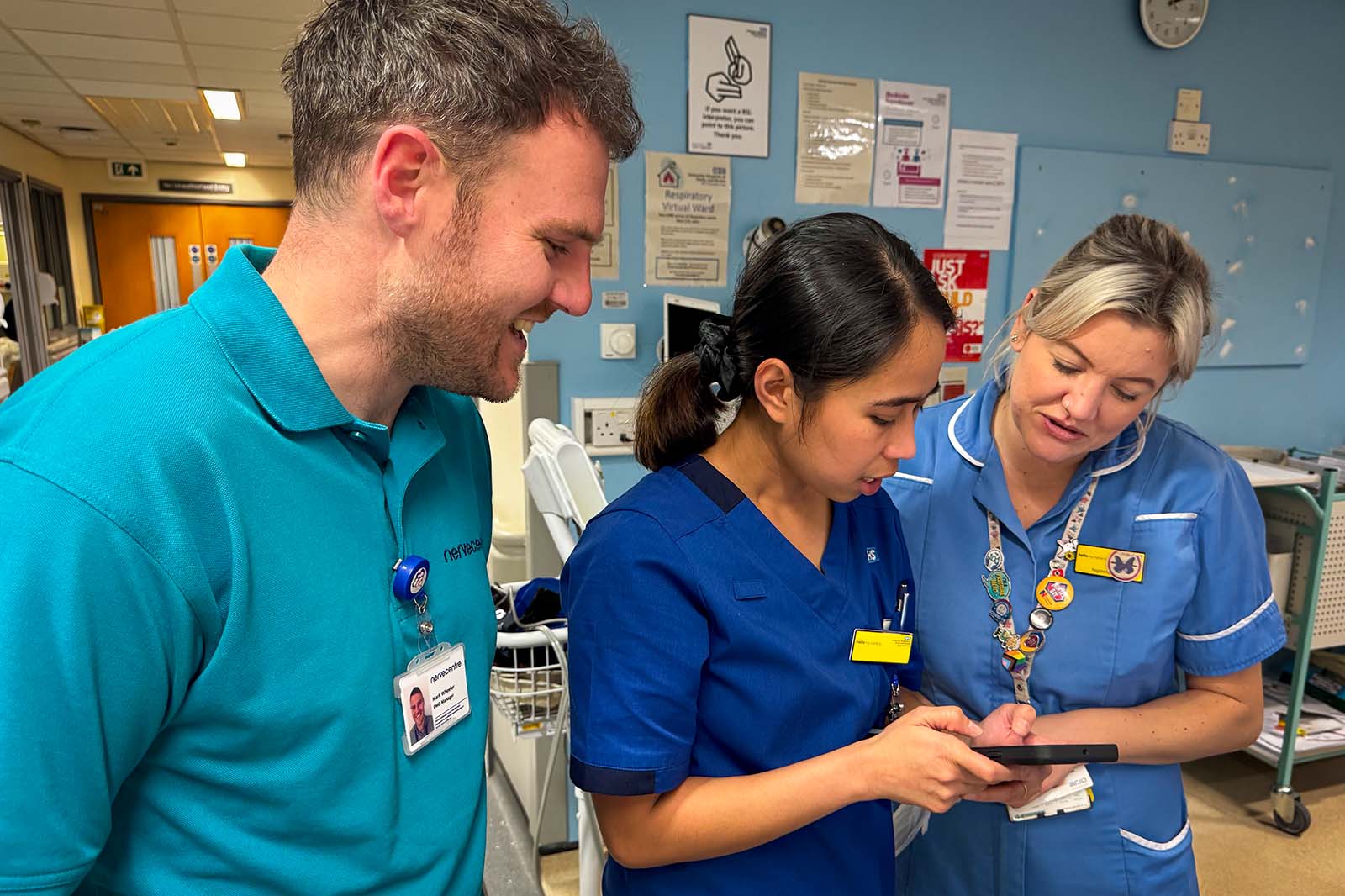With its new reverse bed chain model, Nottingham University Hospitals NHS Trust (NUH) can transfer care from the Emergency Department (ED) to an admission ward earlier in the day, allowing other patients to access emergency care sooner.
Early data from a 6-month pilot suggests the approach reduces the time it takes to transfer patients to an appropriate bed by as much as 75%. It’s also contributing to the trust’s efforts to reduce crowding and delay-related harm.
The journey to reverse bed chains
NUH delivers acute care to millions of people across Nottinghamshire and the East Midlands through a single emergency front door. The trust has recently faced significant demand and capacity challenges, with bed occupancy consistently at 98% or more. These challenges have impacted flow through its emergency pathways, sometimes leading to crowding in ED.
In December 2022, following two back-to-back critical incidents (the first declared system-wide by the ICB) the trust reviewed its internal processes in search of a new way of transferring patients that could mitigate risk and improve capacity and flow.
As part of that review, NUH and Nervecentre worked together to create the reverse bed chain model, which uses artificial intelligence (AI) to discover and propose bed moves in real-time. It can reduce the time taken to admit individual patients by hours and has catalysed the evolution of bed management processes at the trust’s hospitals.
Reverse bed chains were rolled out as a pilot at the beginning of 2023, first at the trust’s QMC site and then quickly afterwards at City Hospital.
Old versus new models
Historically, patients awaiting a transfer from the ED to admissions were at the end of a sequence of moves:
- They were held in the ED while patients leaving base wards were moved to the discharge lounge
- Patients on admission wards were then transferred to the base wards
- Finally, the patients held in the ED would be transferred to admissions
This protracted process often took around four hours, contributing to a crowded ED and associated risks. The long waits to be seen by a clinician and delayed flow in and out of ED carry an increased risk of patient harm, including higher mortality rates for admitted patients.
The realisation that bed chains could be easily identified via Nervecentre led to NUH establishing a new model of bed management that flipped the script on the transfer of patients.
In the new model, where a bed chain exists, patients are no longer held in ED (or assessment areas) until a bed is empty on an admission ward. Instead, they’re the first move in the chain. Porters/transfer teams transfer them to an admissions ward, then immediately move the next patient in the chain to their destination, which may be a base ward or the discharge lounge.The model temporarily leads to wards going ‘one over’ as the chain of transfers advances. However, the reverse bed chain process is supported by dedicated resources who ensure transfers are actioned quickly so that bed stock returns to normal levels.
Charlie Hunter, Lead Nurse for reverse bed chains, says:
Nervecentre identifies the chains – highlighting linked patients in colour-coded groups. My role is to validate that a chain is appropriate, then liaise with wards, cleaning and patient movement services to set the train in motion.
Crucially, the entire team is connected by Nervecentre, which means everyone, including porters and cleaners, is instantly alerted to tasks via their mobile device. This accelerates the process, ensuring every part of the chain is ready to move.
The impact of reverse bed chains
NUH completed 899 reverse bed chains in the first three months at QMC, with 97% starting in EDs and assessment wards.
In 871 of those cases, the first move in the chain was to an assessment ward, suggesting patients are being transferred to the correct clinical specialty – first move, right time, right place.
Reverse bed chain demand at both campuses has increased since roll-out, with the model increasingly being embedded in practice through collaborative working with clinical and non-clinical teams. NUH believes the approach has reduced the risk of delay-related harm by reducing crowding in the ED, while qualitative feedback from staff suggests that patient safety risk has not been transferred out of the ED.
Significantly, the time it takes to carry out a three-part sequence of transfers has reduced from around four hours to one hour – releasing an estimated three hours of ED staff time to focus on care. The first move in that chain is essentially a zero-minute process that prevents emergency patients waiting hours in ED.
The bigger picture: operational visibility
Mark Simmonds, Deputy Medical Director, Consultant Critical Care Medicine, NUH, says the operational gains of the reverse bed chain model wouldn’t be achievable without the visibility teams are getting through Nervecentre.
QMC runs at 98-99% bed occupancy pretty much all the time. You can’t run a hospital at 99% occupancy if you don’t have real-time visibility of what’s going on. If you can’t see where the empty beds are, and you can’t see where the challenges and opportunities are, you’ll never truly be able to make things more efficient.
Nervecentre gives us that visibility. We can see what’s going on from bed-to-bed, and we can share that visibility with our community partners to optimise discharge pathways, where appropriate. What’s more, the building blocks are in place for the visibility of community beds and ICS-wide oversight in the future.
Reverse bed chains – a summary of the benefits
- Patients are being transferred to the correct clinical specialty – first move, right time, right place
- Lower risk of delay-related harm as a result of reducing crowding in the ED
- Improved efficiency. A three-part sequence of transfers that previously took four hours now takes one hour, releasing an estimated three hours of ED staff time to focus on care
- Patients can access emergency care sooner






